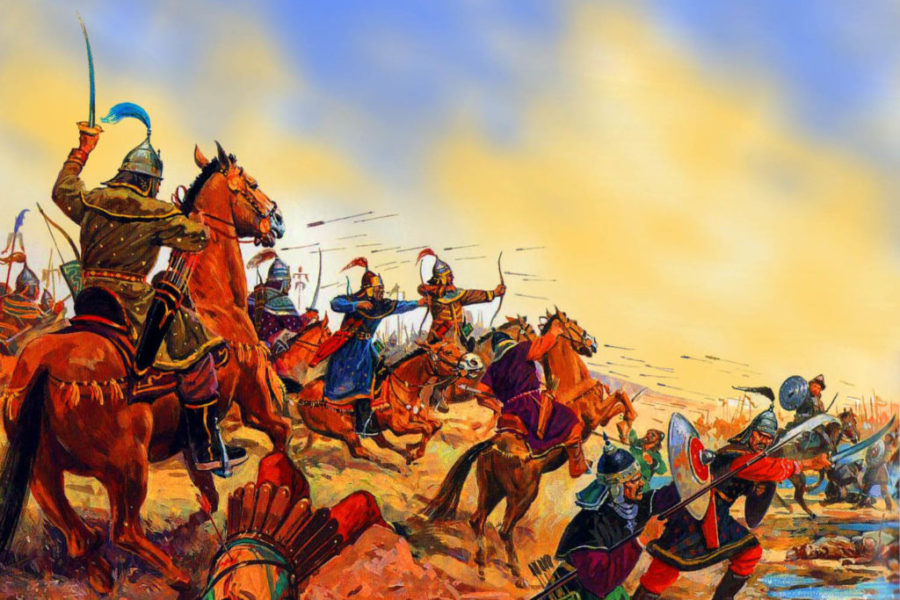
What Ibn al-Athir and Ibn Khaldun wrote about the Mongol conquests
Mongol conquests of the XIII-XIV centuries. sowed death and destruction throughout Central Asia and the Middle East. The Mongols managed to create an empire that covered most of Asia and became the largest in the region. These events shocked the Islamic world, and many Muslim authors have described the Mongols and their conquests in their works. The recurring motives in these descriptions are the horrors of the Mongol invasion, the portrayal of the Mongols as infidels, curses against them.
One of these authorsis Ibn al-Athir (1160-1234). His “Complete set of universal history” covers the period from ancient times to 1231. For Ibn al-Athir, the Mongols are damned pagans, enemies and savages. In his work, he gives a picture of the gradual conquest of Central Asia and the Middle East by the Mongols. According to Ibn al-Athir, the Mongol conquest is such a terrible topic for him that he did not immediately dare to start describing it: “For several years I did not dare to talk about this disaster, considering it too terrible, and disgusted with the speech about it … is there anyone who would find it easy to notify in writing about the death of Islam and Muslims? Is there anyone who would find it easy even to talk about it? Oh, if my mother had not given birth to me! Oh, if I had died before that, or I would have been forgetful and forgotten! … If someone says, that the world since the creation of Adam by Allah Almighty – may He be glorious – and until now has not experienced anything like this, he will be right. The chronicles do not contain anything similar and close to this. The most horrific event that [historians] have mentioned was what Nebuchadnezzar did to the children of Israel, namely their [mass] slaughter and destruction of Jerusalem. But what is Jerusalem compared to what these damned have done to countries in which eacha city twice the size of Jerusalem? And what are the children of Israel compared to those whom they destroyed? After all, the inhabitants of [only] one city, killed by them, more than [all] the children of Israel. Perhaps people will never see such a disaster until the end of the existence of the Universe and the death of this mortal world, except for the [upcoming] battle with Gog and Magog. Even Dajjal keeps those who follow him alive and destroys those who are against him. These same people did not leave anyone alive. They killed women, men, children, ripped open the stomachs of pregnant women and killed the embryos of babies in the womb. “Truly, we belong to Allah and we return to him!”
Ilkhan Hulagu’s army besieges Baghdad / Miniature from the Collection of Chronicles by Rashid ad-Din (c. 1430)
Ibn al-Athir calls the Mongols Tatars and Turks: “In this (617) year, the Tatars, a large Turkic tribe, whose habitat is the Tamgadzha mountains, near China, came to the countries of Islam …”, and after mentioning them and their leader Genghis Khan forgets to add: “May Allah curse them / him!”
The Arab philosopher, historian, and social thinker Ibn Khaldun (1332-1406) approaches the description of the Mongol invasion differently. Both in his world history “Kitab al-khibar” and in his autobiography “At-tarif” he examines the Mongols and their history in some detail. He also refers to them Tamerlane, whom he met in person.
As a nomadic people, the Mongols challenged and defeated the sedentary population and founded their own dynasties. Consequently, the Mongol conquests ideally correspond to Ibn Khaldun’s theory of asabiyya, for him the rise of the Mongolsis a natural step in the course of history. The term asabiyya can be translated as “social solidarity” and plays a key role in Ibn Khaldun’s theory of the rise and fall of dynasties. The scientist distinguishes between “umran badawi”, societies that lead a nomadic lifestyle and / or provide their needs through agriculture, and “umran hadari”, sedentary societies. Nomadic groups lead harsher lives and are therefore not only more resilient and courageous, but also rely on each other’s support and solidarity to survive. Therefore, they have a stronger asabiyya than the sedentary population. A sedentary lifestyle leads to luxury and abundance, which corrupts people, deprives them of courage and diminishes their asabiyya. A sedentary dynasty weakens, eventually collapses, usually because the other is usually

Source: pinterest.com
Ibn Khaldun portrays two prominent Mongol conquerors, Genghis Khan and Timur, as possessing strong asabiyya. This allowed them to unite numerous tribes and clans and lead them. They also possessed other qualities that Ibn Khaldun sees as necessary for rulers to properly lead their people. In addition, they managed to preserve their nomadic values and were not spoiled by luxury.
The brutality of the Mongols and the chaos caused by them terrify Ibn Khaldun, but they also fit into his idea of the excessive destruction caused by the savage Bedouins to whom he compares these conquerors. Therefore, although the historian shares the aversion of his contemporaries for the violence perpetrated by the Mongols, he sees a certain historical continuity.
The works of many Muslim authors emphasize the religious confrontation between Mongols and Muslims as between infidels and believers. In the writings of Ibn Khaldun, we find echoes of this, but this opposition from the very beginning was relatively mild and completely disappeared after the Mongols adopted Islam. He describes Timur as a pious person, and the Mongolian yasa is referred to as something “reminiscent of Sharia”.
Islamosphere

